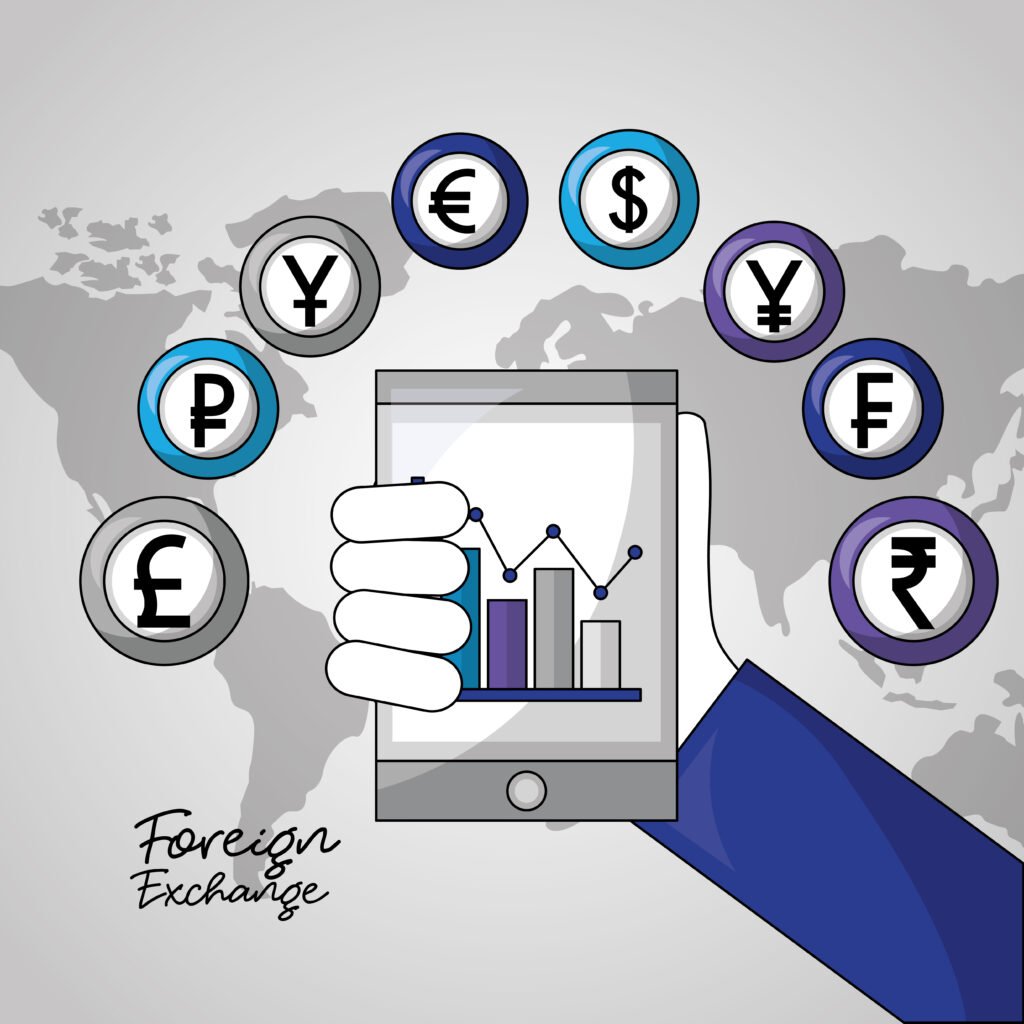How Currency Fluctuations Impact Cross-Border Money Transfers

Have you ever sent money overseas and been surprised that the recipient received less than you expected? It turns out that currency fluctuations can often be a key factor in this situation. These fluctuations—changes in how much one currency is worth compared to another—can affect cross-border money transfers, impacting individuals, businesses, and governments.
In this article, we’ll examine how these currency fluctuations occur, their effects on international transfers, and some helpful strategies for mitigating their impact risks.
1. What Are Currency Fluctuations?
Currency fluctuations are the lively changes we see in exchange rates! These rates tell us how much of one currency we need to spend to purchase another and are shaped by a variety of factors:
- Supply and Demand: High demand for a currency strengthens its value, while oversupply weakens it.
- Economic Indicators: Interest rates, inflation, and GDP growth directly affect currency value.
- Geopolitical Events: Elections, conflicts, and trade deals create uncertainty, causing rate swings.
Countries with floating exchange rates, like the US and the EU, experience frequent fluctuations. In contrast, nations with fixed exchange rates, such as China, maintain a relatively stable currency.
2. How Currency Fluctuations Affect Cross-Border Transfers
Currency fluctuations have a direct impact on the value of money being transferred:
- Amount Received: A weaker destination currency reduces the purchasing power of the funds received.
- Timing Risks: Exchange rates may change during the processing period, altering the final amount delivered.
- Higher Costs: Unfavourable rates can lead to increased fees for currency conversion, especially if providers charge a premium.
For example, the recipient may receive less than expected if you send $1,000 to Europe, and the euro will weaken against the dollar during processing.
3. Real-life Scenarios of Currency Fluctuation Effects
- Personal Remittances: A migrant worker sending money home may find their family receives less due to a weakened local currency.
- Business Transactions: A company paying overseas suppliers could face unexpected costs if exchange rates shift during the transfer.
- Property Purchases: Investors buying real estate abroad risk losing thousands if the currency weakens before the deal closes.
4. Factors Contributing to Currency Volatility
Several factors cause exchange rates to fluctuate:
- Economic Indicators: Inflation, employment data, and GDP growth are key drivers.
- Central Bank Policies: Interest rate hikes can attract foreign investors, strengthening the currency.
- Political Events: Elections, trade agreements, and wars often create uncertainty, driving volatility.
- Global Crises: Natural disasters or pandemics disrupt economies and impact currency values.
5. Challenges Posed by Currency Fluctuations
- Loss of Purchasing Power: Recipients in countries with weaker currencies face reduced buying power.
- Budgeting Issues: Businesses and individuals struggle to plan finances with fluctuating rates.
- Increased Fees: Providers may charge higher fees to cover the risks of volatile currency markets.
6. Strategies to Mitigate the Impact of Currency Fluctuations
To reduce the effects of currency fluctuations:
- Forward Contracts: Lock in an exchange rate for a future transaction, protecting against unfavourable changes.
- Strategic Timing: Monitor the market and transfer funds when rates are favourable.
- Multi-Currency Accounts: Hold funds in different currencies to avoid frequent conversions.
- Transparent Providers: Use low-cost platforms like Wise or Revolut to save on fees and markups.
7. The Role of Technology in Managing Currency Fluctuations
Technology plays a crucial role in minimising risks:
- Currency Tracking Apps: Tools like XE and OANDA offer real-time exchange rate updates.
- AI Predictions: Machine learning models analyse trends to forecast favourable rates.
- Blockchain: Cryptocurrencies like stablecoins offer an alternative, reducing dependency on volatile fiat currencies.
8. Case Studies: Successful Management of Currency Risks
- Small Business: A company locked in a forward contract to pay a supplier in China, avoiding losses during a yuan depreciation.
- Personal Remittances: A family used a multi-currency wallet to minimise conversion fees when sending funds from the US to India.
- Investor: An individual purchased property abroad using a stablecoin transfer, bypassing volatile exchange rates.
9. Future Trends in Currency Fluctuation Management
The financial landscape is evolving rapidly:
- CBDCs: Central Bank Digital Currencies combine fiat money’s stability with blockchain’s efficiency.
- Blockchain Solutions: Decentralised platforms offer transparency and lower costs.
- AI Integration: Predictive tools will improve accuracy in identifying favourable exchange rates.
These innovations promise to make cross-border transfers more stable and cost-effective.
Conclusion
Currency fluctuations significantly impact cross-border money transfers, influencing the final amount received, transfer fees, and overall costs. While they pose challenges, understanding their causes and implementing strategic measures can mitigate risks.
By leveraging technology, monitoring markets, and choosing reliable providers, you can confidently navigate the complexities of international money transfers.
FAQs
-
Why do exchange rates fluctuate frequently?
Supply and demand, economic indicators, and global events drive frequent changes in exchange rates.
-
How do currency fluctuations affect remittances?
They can reduce the recipient’s purchasing power and increase the sender’s costs.
-
When will the exchange rate be favourable?
While exact predictions are complex, tools like currency trackers and AI models can help identify trends.
-
Are cryptocurrencies immune to currency fluctuations?
No, but stablecoins pegged to fiat currencies offer reduced volatility compared to traditional cryptocurrencies.
-
What tools can help individuals manage exchange rate risks?
Apps like XE, AI-driven forecasting tools, and blockchain platforms are excellent resources.


 English
English 


























































































